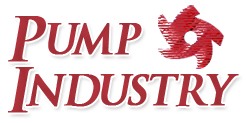Glossary of Pump Terms: B
BA The range of the impeller in a pump. Generally measured from the OD of the impeller banning the range of the impeller walls. This measure is proportional to pump capacity.
Back plate: Used in some centrifugal pumps. The back plate
consists of a gland ring facing the bearing side where the mechanical seal or
gland packings are arranged in such a way that the pumped fluid cannot leak.
One of the walls between the suction covering is positioned towards the
impeller on the reverse plate.
Back pull out pump: A type of pump whose design enables the removal of the complete power end for maintenance or repair while leaving the rest of the pump in place.
Back-to-back: In the context of impellers, this refers to a configuration in which two impellers are positioned side by side on a single shaft that has a common backplate. The flow rate is roughly twice as much as with a single impeller design.
A mechanical seal arrangement known as a back-to-back double seal is frequently utilised when the process fluid is toxic, combustible, or dangerous. This seal is utilised to stop leakage of the process fluid or its vapour into the surrounding area.
Back Vane: An impeller’s axial thrust is balanced using this component of the design scheme.
Pump classified as a “bad actor” if it fails more frequently than would be expected based on its MTBF.It’s time to replace or overhaul this particular type of pump.
Another impeller characteristic that aids in balancing axial thrust is balance holes.
Balance ratio: The majority of mechanical seal makers utilise a conventional balance ratio of 70 to 30. Accordingly, 70% of the seal face area is exposed to the hydraulic closing force, compared to 30% who are not.
Balanced seal:The best method to reduce heat production in the stuffing box is a balanced seal. To lessen heat generation between the seal’s two faces, the area of the seal face is decreased (or balanced).
Ball bearing: A bearing that maintains the distance between the bearing faces using balls.
Ball shuttling: When the balls in a ball bearing rotate perpendicular to their rolling axis, this is known as ball shuttling. Due to the acceleration of microscopic wear, this may cause the bearing to fail before it should. This could be interpreted as having the look of a polished racecourse.
Bar: Non-SI unit of pressure called a bar. equal to 100,000 Pa precisely. similar to that of the atmosphere at sea level.
Barometric pressure: Another name for atmospheric pressure is barometric pressure. used quite a bit in weather reports.
Barrel pump: Pump used to convey fluid from a barrel is called a barrel pump.
Barrier fluid / liquid: The liquid or fluid used as a barrier between two mechanical seals in a double seal is called a barrier fluid. used to keep the process fluid separate from the environment. as buffer fluid as well.
Base circle: In a volute design, a reference circle that serves as the foundation for determining the cutwater diameter. The maximum impeller diameter typically matches the base circle diameter.
The base plate is where the engine and pump are mounted.
Bayonet: To prevent the seal faces from advancing to account for wear, the mechanical seal drive lugs wear into the drive slots.
Bearing: A component of a machine that enables one part to support (or “bear”) another. They limit the relative motion of moving objects.
An element of a mechanical seal’s design that keeps deposits from accumulating on dynamic gaskets.
Metal bellows used in mechanical sealing have bellows plates made of thin, pressed plates that are joined by welding to create a convolution. These plates are always referred to as bellows plates.
Belt drive: A system of belts and pulleys that efficiently transfers torque from one driving shaft to another at the appropriate speed.
A component of a mechanical seal’s design known as a bellows prevents deposits from building up on dynamic gaskets.
Bellows: Bellows plates for mechanically sealed metal bellows are thin, pressed plates that are welded together to form a convolution. The term “bellows plates” is always used to describe these plates.
A system of belts and pulleys that effectively distributes torque from one driving shaft to another at the right speed is known as a belt drive.
Dynamic gasket deposits are prevented from accumulating on mechanical seals by a bellows, a design element.
Thin, pressed plates that are joined together to form a convolution serve as the bellows plates for mechanically sealed metal bellows. These plates are referred to as “bellows plates” in all instances.
Body bound bolts: A belt drive is an arrangement of pulleys and belts that efficiently transfers torque from one driving shaft to another while operating at the proper speed.
Bowl (vertical turbine pump):Vertical turbine pumps with many stages have a bowl, which is one of the stages’ casings.
A scale for determining a material’s hardness. It describes the indentation formed after employing an indenter to puncture the material with a specific amount of force.
Brinnell hardness: The fluid utilised between a double seal’s two mechanical seals is known as the buffer fluid (see barrier fluid).
Buna N: Also referred to as rubber nitrile. It is a synthetic rubber made from the copolymer of butadiene and acrylonitrile.
Bushing: A bushing is an independent plain bearing that provides a bearing surface when it is put into a housing. intended for rotary applications.
Bypass line:A design that omits a component of the pump system is known as a bypass line. This can occur from the pump discharge to any lower pressure point in the system, from the stuffing box to the pump suction, or from the pump discharge to the stuffing box.
Related Links
Multiple keywords
industrial, rentindustrialpump, pompaindustri, industrialpumprepair, firepump, rewinding, highpressure, salepump


